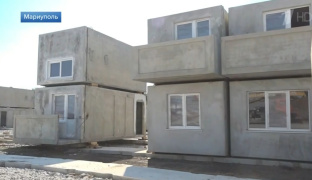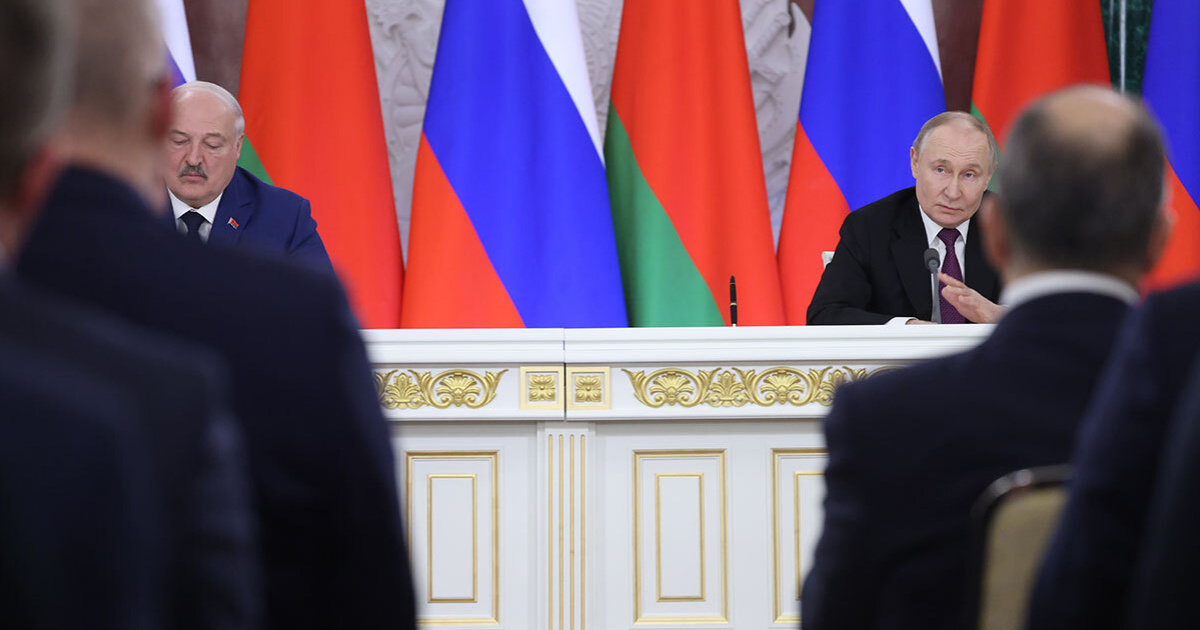
The remnants of the economy in the occupied territories are deeply unprofitable and exist solely due to subsidies from the aggressor country's budget. However, these subsidies are meager and incapable of creating conditions for growth.
Coal industry: waiting for another plunder
Back in April, the "Minister of Coal and Energy of the DNR" Andrey Chertkov promised a 10% increase in coal mining from this year, up to 3.3 million tons. But in June, at the St. Petersburg Economic Forum, the "head of the DNR" Denis Pushilin announced that there would be no growth at all.
According to him, in 2023 the "republican" coal production will remain at the 2022 level, amounting to approximately 3 million tons. For comparison, in May 2011 alone, the Donetsk oblast's mines produced 3.1 million tons.
Pushilin clarified that 70% of the extracted resource is allocated to the needs of local thermal power plants, Starobishivska and Zuevska. He also admitted that the illegal export of coal from the occupied region to russia continues despite international sanctions.
"Despite the sanction pressure, we have the opportunity to supply the remaining part to European and Asian countries through our logistics chains established and operating since 2014", - said the "head of the DNR".
This indicates that there is no consumption of metallurgical coal in the occupied territory. Its largest producers are the Makiivuhillia group and the Zasyadko Donetsk Mine. However, there is no demand for their products from the Donetsk and Yenakiieve metallurgical plants, and the Alchevsk metallurgical plant. There can only be one reason for that: these enterprises are not operational.
Interestingly, even Pushilin chose to avoid discussing the "achievements" of the metallurgical industry in the territory under occupation at the St. Petersburg forum.
He only promised that the Mariupol Illich Steel and Iron Works, destroyed by the russian invaders during the city's siege, will be restored by 2025. However, it can be said with almost 100% certainty that this won't happen, and there's a simple reason for it.
If the occupiers couldn't revive full-fledged metallurgical production in Alchevsk, Yenakiieve, and Donetsk over the past 9(!) years (despite several attempts), why would they bother reanimating the Steel and Iron Works? It would only end up idle, just like the others.
Thus, the remnants of the coal industry are the only sector of the occupied Donbas economy that is not completely devastated (at least not yet). However, the "DNR" is doing everything to correct this "oversight" as quickly as possible.
From January to April, local miners worked without receiving wages, and it was only in May that they started receiving money from the "DNR" budget. According to Pushilin, all debts were paid off in June, with 2.7 billion rubles allocated for this purpose.
It's evident that with such an attitude from the "authorities" and the administration, the labor motivation among the miners is extremely low, to say the least. In other words, there is little to no desire to work.
Currently, there are 16 mines on the uncontrolled territory of the Donetsk oblast, with production only being carried out in 10 of them. All of these mines were "nationalized" and transferred to the "Ministry of Coal and Energy of the DNR" in 2020.
As it is known, there were long-standing wage debts on the captured mines even in 2014-2019 when they were managed by the company Vneshtorgservis, owned by the fugitive Kharkiv-based oligarch Serhiy Kurchenko. Therefore, nothing has changed after the transfer to the "ministry". At least, not for the better.
Even the "Minister of Coal and Energy of the DNR" Chertkov admitted in a December interview with russian media that the situation in the mines is dire: "The mine shafts, passages, equipment, including the combines we use, are all in a state of decay".
According to him, now the "DNR" is hopeful for the arrival of some "private investors": "Suddenly, many are willing not only to restore the mines but also to invest significant funds for their technical reequipment".
In turn, Pushilin promised in June at the St. Petersburg forum that some mines would be handed over to "investors" in the second half of the year. And here it is crucial to "separate the wheat from the chaff".
There is no doubt that there are individuals interested in gaining control over the Donetsk mines. However, only the local puppet authorities and the media under their control can call them "investors".
No real investor in their right mind would invest money (we are talking about tens of millions of dollars needed for the mines' revival) in entities with an unclear legal status.
From the perspective of international law, the "DNR" and "LNR" are illegally occupied Ukrainian territories, and the self-proclaimed "authorities" there are entirely illegitimate. Therefore, foreign investors (if Pushilin and his company swindle them) would not be able to seek recourse in international courts to protect their investments.
As for russian businessmen, those who are not under sanctions for their economic support of the war against Ukraine have absolutely no desire to be added to the sanction lists. And those who are already under sanctions have no certainty that this territory won't be de-occupied by the Ukrainian Armed Forces tomorrow or, at the very least, won't become an active combat zone.
Therefore, only people who fully understand that their presence in the occupied Donbas is temporary would consider coming here. Within this limited time, they need to extract as much as possible from the mines as quickly as possible.
Obviously, such an approach does not involve "investing large amounts for the technical retooling" of the mines. It is also evident that these so-called "businessmen" can hardly be called investors.
Zaporizhzhia oblast: a zone free from economy
On June 20, the State Duma of the russian federation adopted a law on a free economic zone in the Ukrainian occupied territories. It exempts "investors" from profit tax, property tax, and land tax (for three years) and provides social security contribution benefits – all for a period of ten years.
The law may seem favorable from an economic perspective, but it won't work for the reasons mentioned above. Additionally, there is no russian state insurance against military risks.
Meanwhile, Kyiv is currently developing state insurance for investors. According to the Minister of Economics, Yuliia Svyrydenko, such insurance may become a mandatory option by the end of this year (pilot projects already exist). The putin regime has neither the desire nor the ability to create a similar mechanism.
For now, while the kremlin waits for "investors", the remaining assets in the seized territories are being burdened on the russian budget, which is already facing record deficits (a shortage of funds for state expenses).
The occupied areas of the Zaporizhzhia oblast are agricultural. Prior to the war, local farmers specialized in growing grains and sunflowers. The occupation dealt a significant blow to this sector, even though the intensity of the fighting here was not as severe as in the Donbas.
To support the abandoned agricultural enterprises, the russian government created the state enterprise State Grain Operator. According to local collaborators, it is expected to receive 1.5 billion rubles from moscow in subsidies this year.
Overall, 400 enterprises, including agricultural firms and resort hotels on the Azov coast, were seized from businesses in the Zaporizhzhia oblast. The so-called "external management" was introduced there. The occupiers said that out of them, 70 were operational, and 54 were placed under "external management".
It is assumed that they will be transferred to "investors" in the future. However, it is unclear how the occupiers intend to find so many "investors".
As previously noted by OstroV, almost all major industrial enterprises in the Zaporizhzhia oblast are located in Zaporizhzhia city, which is under the control of Ukrainian authorities and the Armed Forces of Ukraine.
On the occupied territory, there are only the Zaporizhzhia Iron Ore Plant, the Hydrosila Melitopol Tractor Hydraulic Units Plant, as well as the agricultural machinery plant Berdianski Zhatky and the Azmol association (automobile oil production) in Berdiansk.
The Zaporizhzhia Iron Ore Plant will certainly not function under the occupation. Previously, the plant supplied products to the Zaporizhzhia Iron and Steel Works. And now, there is simply no place for the ore to go - even if production is resumed.
This means that the city of Dniprorudne is doomed to decline – the work of all local residents was connected with the ZIOP, and there are simply no other employment options in the city, just like in the mining towns of Donbas.
The same problem applies to Hydrosila, Azmol and Berdianski Zhatky. They have always focused on the domestic Ukrainian market. Export contracts (if there were any) made up a very insignificant part of their order portfolio.
In June 2022, the "head of Crimea", S. Aksyonov, visited Dniprorudne. He promised that the Zaporizhzhia Iron Ore Plant would resume operations in July. This suggests that the collaborators intended to establish illegal ore exports through the annexed peninsula.
However, this did not happen. According to local residents, the occupiers promised the miners 60% of their pre-war wages but insisted on signing new labor contracts "in accordance with russian legislation".
"Not a single worker accepted this offer", - one of the local residents said in a comment to Ukrainian media. Therefore, the occupiers seized 54 previously loaded wagons with ore from the railway station. That's how the "export" ended.
Everything was even simpler with Hydrosila. No one even pretended to attempt to resume production. According to the mayor of Melitopol, Ivan Fedorov, right after the city was captured, russian military personnel began looting machines and presses from the factory workshops.
The same thing happened at the tractor parts plant. Previously, it occurred at enterprises in the occupied part of the Donetsk oblast. And now, these same people talk about some "economic development of new regions".
The prospects for the agricultural sector on the occupied territory of the Zaporizhzhia oblast are equally gloomy. The Deputy Director of the State Grain Operator, A. Dzhurkin, stated plans to gather 2-2.5 million tons of grain in June. This is significantly lower than the pre-war figure of 3.62 million tons in 2021 when local agricultural producers received their harvest.
But even this negative forecast is likely an overestimation, especially after the explosion of the Kakhovka Dam. As previously noted by OstroV, 74% of all irrigation systems in the Zaporizhzhia oblast depended on the Kakhovka reservoir. Coupled with the decrease in crop yields in the surrounding areas, achieving even 1 million tons would be a huge success. However, it's uncertain whether they will be able to reach that target.
From this, a logical conclusion arises: de-occupation is the only option that will lead to economic growth in the uncontrolled territories of southeastern Ukraine.
By Vitaliy Krymov, OstroV




